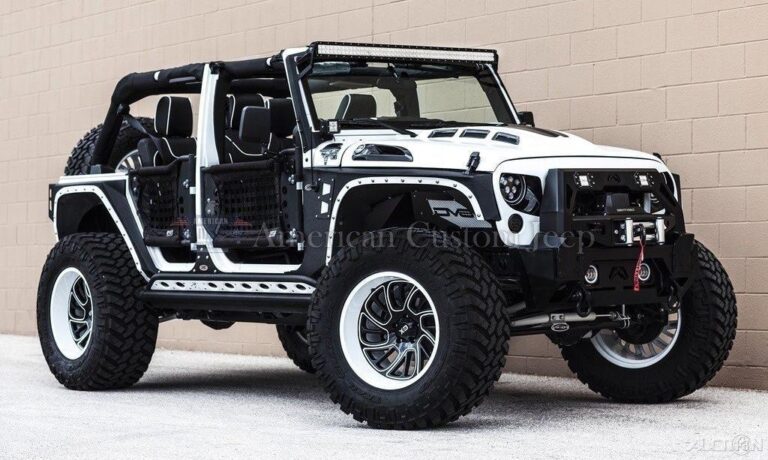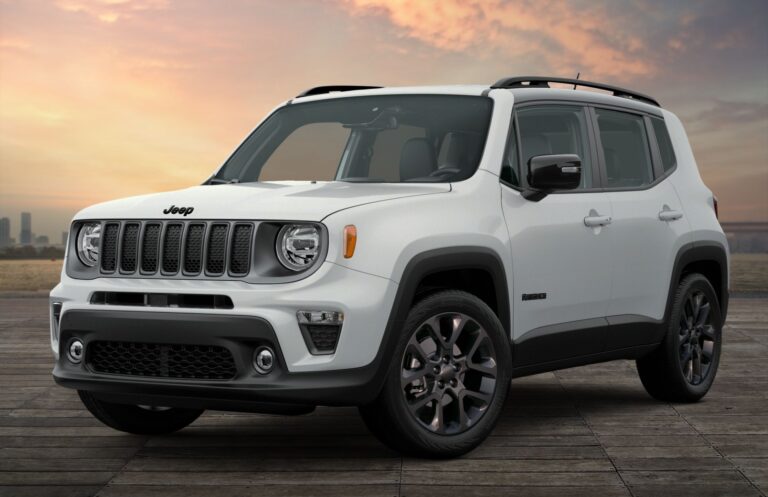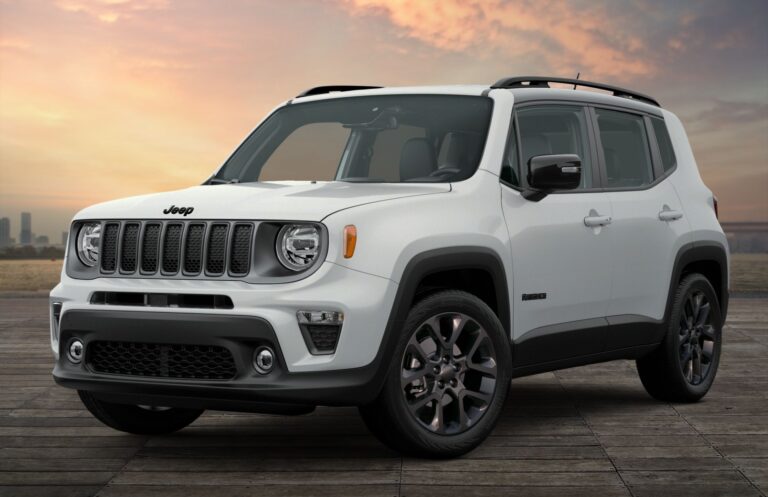Jeep Overdrive For Sale: Unlocking Efficiency and Performance
Jeep Overdrive For Sale: Unlocking Efficiency and Performance jeeps.truckstrend.com
For decades, the Jeep brand has been synonymous with rugged capability, off-road prowess, and an adventurous spirit. From the venerable Willys MB to the modern Wrangler, Jeeps are built to tackle the toughest terrains. However, many classic Jeeps, and even some earlier modern models, were designed primarily for low-speed torque and durability, often lacking a crucial feature that vastly improves on-road driving: overdrive. This is where the topic of "Jeep Overdrive For Sale" becomes incredibly relevant, offering a gateway to enhanced fuel economy, reduced engine wear, and a much more comfortable highway experience.
This comprehensive guide will delve into everything you need to know about purchasing an overdrive unit for your Jeep. Whether you’re a vintage Jeep enthusiast looking to make your CJ more highway-friendly or simply seeking to optimize your vehicle’s performance, understanding the nuances of overdrive options is key.
Jeep Overdrive For Sale: Unlocking Efficiency and Performance
What is a Jeep Overdrive and Why Do You Need One?
At its core, an overdrive unit is a gear ratio that allows the engine to spin at a slower RPM (revolutions per minute) for a given road speed. In simpler terms, it’s like adding an extra, taller gear to your transmission, typically a fifth or even sixth gear, that drops your engine’s RPM without reducing your speed.
Historically, many Jeeps, especially those with 3-speed or 4-speed manual transmissions paired with low-geared axles, were fantastic for crawling over obstacles but became buzzy, thirsty, and uncomfortable at highway speeds. Driving at 60-70 MPH would often push the engine to high RPMs, leading to:
- Poor Fuel Economy: More RPMs mean more fuel consumed.
- Increased Engine Wear: Constant high RPMs accelerate wear on engine components.
- Excessive Noise and Vibration: A high-revving engine makes for a less pleasant cabin experience.
- Limited Top Speed: The engine simply runs out of usable RPMs.

An overdrive unit directly addresses these issues by effectively lowering the final drive ratio. This allows the engine to work less strenuously, resulting in:
- Significant Fuel Savings: Especially noticeable on long highway trips.
- Reduced Engine Stress and Wear: Extending the life of your engine.
- Quieter and More Comfortable Ride: A lower RPM means less engine noise.
- Potentially Higher Top Speeds: The engine has more room to breathe.
- Improved Drivability: Making your Jeep much more versatile for both on-road and off-road adventures.

For vintage Jeep owners, adding an overdrive isn’t just about efficiency; it’s about preserving the original character of the vehicle while making it genuinely usable in modern traffic conditions.

Types of Overdrive Units for Jeeps
When you search for "Jeep Overdrive For Sale," you’ll encounter a few primary categories. Understanding these distinctions is crucial for making the right choice for your specific Jeep model and driving needs.
1. Integrated Overdrive Transmissions (Modern Jeeps)
Many newer Jeep models come equipped with transmissions that have integrated overdrive gears from the factory. For instance, the popular AX15, NV3550, and NSG370 manual transmissions, or automatic transmissions like the 42RLE or 8HP75, all include overdrive ratios. If you own a more modern Jeep, you likely already have this feature. The discussion around "Jeep Overdrive For Sale" in this context often refers to upgrading to a transmission with better overdrive ratios or performing a complete transmission swap if your original unit is failing or less desirable.
2. Aftermarket Bolt-On Overdrive Units (Classic Jeeps)
This is the category most relevant to classic Jeep owners (e.g., Willys, CJ2A, CJ3A, CJ3B, CJ5, CJ6, CJ7 up to a certain year) seeking to add overdrive without swapping out their entire transmission. These units typically bolt directly to the back of the transfer case (most commonly the Dana 18 or Dana 20) or inline with the drivetrain.
- Laycock de Normanville Type (Warn/Husky/Saturn Overdrives): These are perhaps the most iconic and sought-after aftermarket overdrives for vintage Jeeps. Originally designed by Laycock de Normanville, various manufacturers like Warn, Husky, and later Saturn (through Advance Adapters) produced units based on this design.
- Mechanism: These units usually provide a 25% reduction in engine RPM for a given road speed. They typically bolt between the transmission and the transfer case, or directly to the back of the Dana 18 transfer case.
- Pros: Historically accurate for many vintage restorations, relatively simple installation for their era, provides a distinct "overdrive" gear.
- Cons: Can be expensive, especially original or fully rebuilt units. Parts can be scarce for older models. Durability can be a concern if not properly maintained or if abused.
- Gear Vendors (Under/Overdrive): While less common for the very earliest Jeeps, Gear Vendors units offer a robust and versatile solution. These are often used in heavier-duty applications or where a more significant gear split is desired.
- Mechanism: These units are planetary gearsets that can be engaged as an overdrive (typically 22% reduction) or even an underdrive in some configurations, effectively doubling the number of gears in your transmission. They are typically installed inline with the driveshaft.
- Pros: Extremely durable, highly versatile, can be used with a wider range of transmissions and transfer cases.
- Cons: Higher initial cost, may require more significant drivetrain modifications (driveshaft length, crossmember).
3. Transmission Swaps (Modern Overdrive Solution for Classic Jeeps)
For many classic Jeep owners, a full transmission swap is often the most comprehensive and modern way to achieve overdrive. This involves replacing the original 3-speed or 4-speed transmission with a more modern 5-speed or 6-speed manual (or a 4-speed automatic) that already has an integrated overdrive gear.
- Popular Manual Swaps:
- AX15 (Jeep YJ/TJ): A popular and relatively affordable 5-speed manual swap for CJs.
- NV3550 (Jeep TJ): Another robust 5-speed manual option.
- NSG370 (Jeep JK): A 6-speed manual, more complex to adapt but offers more ratios.
- Popular Automatic Swaps:
- 700R4 (GM): A classic 4-speed automatic with overdrive, often adapted for Jeeps.
- 4L60E (GM): Electronically controlled version of the 700R4, highly adaptable.
- AW4 (Jeep XJ): A very durable 4-speed automatic, often found in Cherokees.
- Pros: Modern shifting feel, often more durable than original transmissions, integrated overdrive, can improve overall drivability significantly.
- Cons: More involved installation (requires adapter kits, driveshaft modification, shifter relocation, potential crossmember modification), higher overall cost compared to a simple bolt-on overdrive unit.
Key Considerations When Buying a Jeep Overdrive
Navigating the "Jeep Overdrive For Sale" market requires careful thought. Here are critical factors to consider before making a purchase:
- Compatibility: This is paramount. Which specific Jeep model, year, transmission, and transfer case do you have? Overdrive units are highly specific. For example, a Saturn overdrive is designed for the Dana 18 transfer case, not a Dana 20. Transmission swap kits are also specific to the engine and transfer case pairing.
- Condition: Are you looking for a new, rebuilt, or used unit?
- New: Offers peace of mind with a warranty but is the most expensive.
- Rebuilt: A good balance of cost and reliability, often comes with a limited warranty from the rebuilder. Inquire about what was replaced.
- Used: The most affordable but carries the most risk. Thoroughly inspect for cracks, excessive play, missing parts, and evidence of proper maintenance. Ask for videos of it operating if possible.
- Installation Complexity: Are you a seasoned DIY mechanic, or will you need professional help? Bolt-on units for classic Jeeps are generally simpler than full transmission swaps, which involve adapting bellhousings, output shafts, shifters, and often require driveshaft modifications. Factor in labor costs if hiring a shop.
- Cost vs. Benefit: While an overdrive unit saves fuel, the payback period can be long, especially for expensive units. The primary benefit often lies in the improved driving experience, reduced engine wear, and increased resale value of a more usable classic Jeep.
- Gearing and Tire Size: Adding an overdrive effectively changes your final drive ratio. If you have very large tires or extremely low axle gears, an overdrive might make the vehicle feel sluggish in top gear. Conversely, if your axles are geared too high, the overdrive might make the RPM too low, causing lugging. Consider your overall gearing strategy.
- Purpose of Your Jeep: Is it a dedicated trail rig where overdrive is rarely used? A daily driver for long commutes? A weekend cruiser? Your usage will dictate the best solution.
Where to Find Jeep Overdrive Units For Sale
Finding the right overdrive unit requires knowing where to look:
- Specialized Jeep Parts Retailers: Companies like Quadratec, Morris 4×4 Center, Walck’s 4×4, Kaiser Willys Auto Parts, and Advance Adapters (for Saturn overdrives and swap kits) are excellent resources. They often stock new or rebuilt units, as well as comprehensive swap kits.
- Online Marketplaces: eBay, Craigslist, and Facebook Marketplace are common places to find used or sometimes rebuilt units from private sellers or smaller shops. Exercise caution and thoroughly vet sellers.
- Jeep Forums and Classifieds: Dedicated vintage Jeep forums (e.g., CJ-2A Page, Early CJ5.com) often have classified sections where enthusiasts buy, sell, and trade parts. This is a great way to tap into community knowledge.
- Salvage Yards/Used Parts Dealers: For more obscure or vintage parts, a reputable salvage yard specializing in Jeeps might yield results, though finding complete, good-condition units can be challenging.
Installation Guide: A Brief Overview
While a full installation guide is beyond the scope of this article, here’s a general idea of what’s involved, and critical tips:
- Preparation: Gather all necessary tools, a floor jack, jack stands, and safety gear. Have a service manual specific to your Jeep and the overdrive unit.
- Drivetrain Disassembly: This typically involves disconnecting the driveshafts, shifter linkages, and potentially removing the transfer case or transmission (for a full swap).
- Unit Installation:
- Bolt-on Overdrive: These units usually bolt directly between the transmission and transfer case, or to the rear of the transfer case. This may require an adapter plate.
- Transmission Swap: This is more involved, requiring the new transmission to be mated to the engine (often with an adapter plate), and then the transfer case to the transmission.
- Reassembly: Reconnect all components, ensuring proper alignment and torque specs.
- Shifter Linkage: Install and adjust the new shifter mechanism for the overdrive unit or new transmission.
- Driveshaft Modifications: Almost all overdrive installations or transmission swaps will require front and/or rear driveshaft length modifications. This is a crucial step often requiring professional measurement and fabrication.
- Fluid Fill: Fill the overdrive unit and/or transmission with the correct type and amount of fluid.
- Testing: Test the unit in a safe environment, checking for proper engagement, disengagement, and leaks.
Practical Advice: Always follow the manufacturer’s specific instructions. If you’re not comfortable with complex mechanical work, especially involving driveline geometry, professional installation is highly recommended. It’s better to pay for expertise than to risk damage or an unsafe vehicle.
Maintenance and Longevity
An overdrive unit, like any mechanical component, requires proper maintenance to ensure longevity:
- Fluid Changes: Adhere to the manufacturer’s recommended fluid type and change intervals. This is perhaps the most critical maintenance item.
- Check for Leaks: Regularly inspect the unit for any signs of fluid leaks.
- Proper Engagement/Disengagement: Learn the correct procedure for shifting into and out of overdrive. Never force it, and avoid engaging/disengaging under heavy load or at very high speeds.
- Listen for Unusual Noises: Any grinding, whining, or clunking sounds could indicate a problem that needs immediate attention.
Practical Advice and Actionable Insights
- Do Your Homework: Before spending a dime, thoroughly research the best overdrive solution for your specific Jeep. Consult forums, read reviews, and understand the pros and cons of each option.
- Budget Beyond the Unit: Remember to factor in the cost of adapter kits, new driveshafts (or modifications), fluids, gaskets, potential crossmember modifications, and professional labor if you’re not doing it yourself. These ancillary costs can significantly increase the total investment.
- Don’t Just Chase the Cheapest Option: A bargain-basement used unit might end up costing you more in repairs and headaches down the road. Prioritize reputable sellers and rebuilt units with warranties.
- Consider Your Driving Habits: If your Jeep rarely sees highway speeds, a costly overdrive might not be the most practical investment. However, if you plan to use it as a daily driver or for longer trips, it’s almost essential.
- Think Long-Term: An overdrive unit not only improves your driving experience but can also increase the resale value of your classic Jeep, making it more appealing to a wider range of buyers.
Price Table: Jeep Overdrive Options
Please note that prices are estimates and can vary widely based on condition (new, rebuilt, used), seller, and market demand. Installation costs are not included.
| Overdrive Type/Product | Estimated Price Range (USD) | Compatibility | Key Features/Notes |
|---|---|---|---|
| Saturn Overdrive Unit | $1,800 – $3,000+ (New/Rebuilt) | Jeep CJ series with Dana 18 transfer case | Bolts to rear of Dana 18, 25% overdrive ratio, popular for vintage Jeep restorations. |
| Warn/Husky Overdrive (Used) | $800 – $2,500+ (Used) | Jeep CJ series with Dana 18 transfer case | Original vintage units, condition varies greatly, parts can be scarce. |
| Gear Vendors Overdrive Unit | $2,500 – $4,000+ (New) | Universal (requires specific adapters) | Heavy-duty, 22% overdrive, doubles gears, highly versatile, can be used with various setups. |
| AX15 Transmission Swap Kit | $1,500 – $3,000+ (Kit only) | Jeep CJ series, various engines (AMC/Chevy) | 5-speed manual with integrated overdrive, requires adapter plates, driveshaft mods. |
| NV3550 Transmission Swap Kit | $1,800 – $3,500+ (Kit only) | Jeep CJ series, various engines | Similar to AX15, robust 5-speed manual with overdrive. |
| 700R4/4L60E Auto Swap Kit | $2,000 – $4,500+ (Kit only) | Jeep CJ series, various engines (GM/AMC) | 4-speed automatic with overdrive, requires adapter plates, shifter, cooler lines. |
| Used Transmission (AX15/NV3550/700R4) | $300 – $1,000 (Used) | Varies (needs inspection) | Cheaper option, but condition is a gamble. Add cost for rebuild if necessary. |
Frequently Asked Questions (FAQ)
Q1: What exactly is an overdrive in a Jeep?
A1: An overdrive is a gear ratio (typically greater than 1:1, e.g., 0.75:1) that allows the engine to spin at a lower RPM for a given vehicle speed, improving fuel efficiency, reducing engine wear, and making highway driving more comfortable.
Q2: Will adding an overdrive unit significantly improve my Jeep’s fuel economy?
A2: Yes, for Jeeps primarily driven on highways, an overdrive can lead to noticeable improvements in fuel economy (often 15-25% or more on the highway) by allowing the engine to operate at a more efficient, lower RPM range.
Q3: Is it difficult to install a Jeep overdrive unit?
A3: The difficulty varies. Bolt-on units for classic Jeeps (like a Saturn overdrive) are less complex than full transmission swaps, but both require mechanical aptitude, specialized tools, and often involve modifying driveshafts and shifter linkages. Professional installation is recommended if you’re not experienced.
Q4: Which Jeep models benefit most from an aftermarket overdrive?
A4: Older Jeep models with 3-speed or 4-speed transmissions and low axle gearing (e.g., Willys MB, CJ2A, CJ3A, CJ5, early CJ7) benefit the most, as they were not originally designed for sustained highway speeds.
Q5: Can I use an overdrive unit off-road?
A5: Generally, overdrive units are designed for on-road use. They are typically disengaged when off-roading, especially in low-range. Using them under heavy torque loads or during aggressive off-roading can cause damage.
Q6: What’s the main difference between an aftermarket overdrive unit and a transmission swap?
A6: An aftermarket overdrive unit (like a Saturn or Gear Vendors) adds an overdrive gear to your existing transmission and transfer case setup. A transmission swap replaces your entire transmission with a newer one that has integrated overdrive gears, often offering more modern shifting and durability.
Q7: How much does a Jeep overdrive typically cost?
A7: The cost varies widely. A used bolt-on unit might start around $800, while a new, high-quality unit or a complete transmission swap kit can range from $2,500 to $4,500 or more, not including labor or additional parts like driveshafts.
Conclusion
The decision to invest in a "Jeep Overdrive For Sale" is a significant one, but for many Jeep owners, it’s a game-changer. Whether you opt for a classic bolt-on unit to maintain historical accuracy or a modern transmission swap for ultimate drivability, the benefits of reduced engine wear, improved fuel economy, and a vastly more comfortable highway ride are undeniable.
By carefully considering your Jeep’s model, your driving habits, and the various options available, you can make an informed choice that will transform your Jeep from a low-speed trail warrior into a versatile vehicle capable of tackling both the roughest trails and the longest highway stretches with ease and efficiency. The right overdrive unit isn’t just an accessory; it’s an upgrade that unlocks your Jeep’s full potential.






